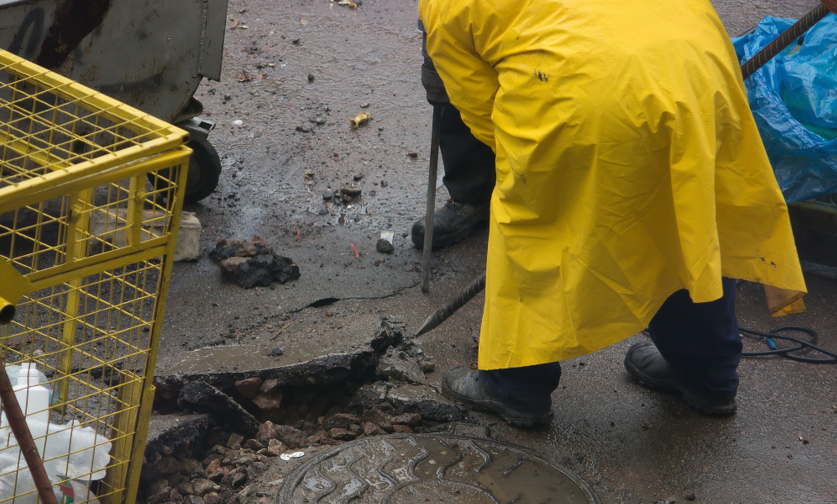
by lakeridge | Jan 16, 2019 | Commercial Paving, Residential Paving
Paving is one type of construction that can be significantly impacted by temperature. What tends to matter more than the actual ambient temperature is the ground temperature and moisture levels. Even if it’s 45 degrees outside in the morning, the ground itself is likely colder from the night before, and its important for the ground to be adequately warm to lay asphalt. Proper compaction requires the asphalt to remain above a certain temperature during the process. If the ground is too cold it will leach the heat out of the asphalt too quickly, which means it may settle before paving crews can finish compacting and smoothing it. Evaporating rainwater also has a cooling effect, which can result in similar complications if a job isn’t scheduled appropriately to minimize these issues. There are ways around low temperatures for small scale jobs, such as filling potholes. Asphalt pavers with infrared paving equipment can utilize heaters and hot boxes to keep the asphalt dry and maintain a suitable temperature throughout the job. This equipment generally can’t be used for larger jobs, like repaving a road or an entire parking lot, because the infrared asphalt heaters don’t cover a large enough area. How Cold Is Too Cold for Asphalt Paving in Seattle? The real issue with temperature is its impact on our ability to properly compact the asphalt before it cools too much. As a rule of thumb a thin, 1.5-inch layer of asphalt needs to be entirely compacted within 16 minutes of its application if the ambient temperature is in the 40 to 45-degree Fahrenheit range. When hot mix asphalt is delivered...
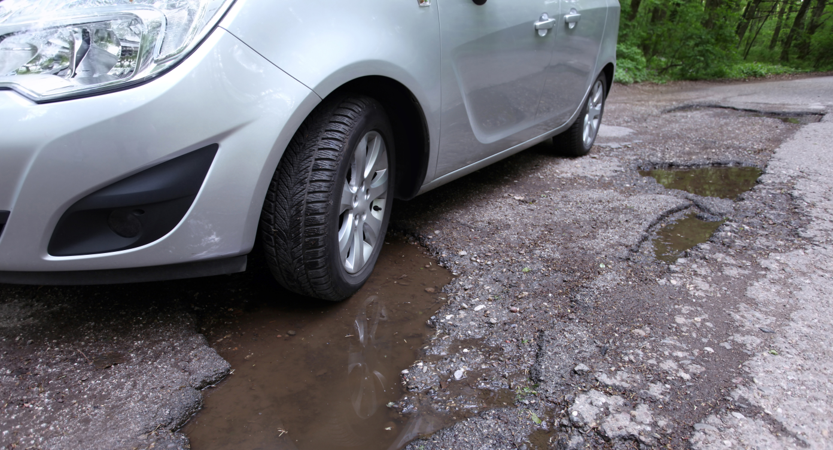
by lakeridge | Jan 16, 2019 | Residential Paving
The winter months can be especially hard on asphalt parking lots, roads and driveways. Nothing weakens and eventually destroy asphalt surfaces quite like the freeze-thaw cycle. Although freezing temperatures aren’t always a huge concern for the Seattle area, we do have enough rain and temperature swings to batter asphalt. When potholes do form, it’s important to fix them fast so they don’t turn into bigger problems. The last thing you want is for someone to be injured or damage their vehicle on your property – and there are few things as jarring and annoying than hitting a pothole when you’re driving. Potholes that are left unaddressed can also spread and result in further damage. The Best Method for Pothole Repair: Cold Patch or Hot Mix Asphalt? Cold patch asphalt is already mixed, which allows these repairs to be performed quickly and simply. This is the most DIY friendly option and it doesn’t take long to apply, but it’s also the less effective and short term of the two methods. To perform cold patch asphalt repair, you just need to get already-mixed asphalt from a local hardware store, pour it into the hole and pack it as much as you can with a tamper. Rest assured, a cold patched pothole will return because this solution doesn’t provide a tight enough seal to prevent future moisture penetration. The other factor that makes cold patch mix a short-term solution is its composition, which isn’t formulated to stand up to the rigors of frequent traffic. Hot mix asphalt repair is the only long-term pothole fix that will prevent the pothole from resurfacing again....
by lakeridge | Jul 19, 2018 | Residential Paving
Download full version...
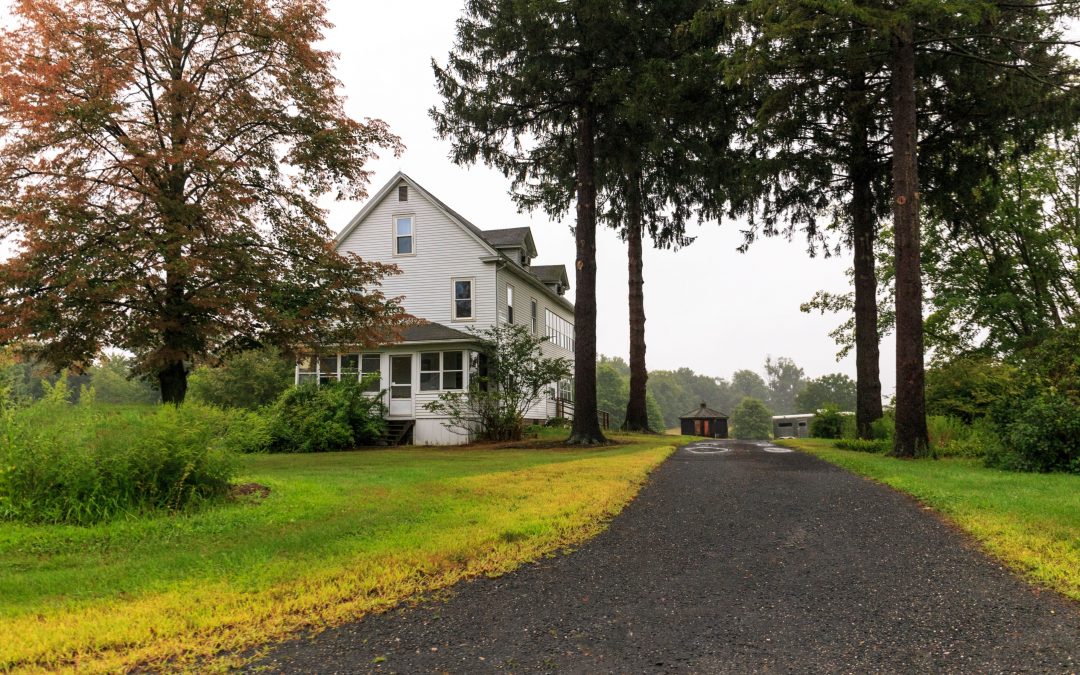
by lakeridge | Jul 19, 2018 | Residential Paving
Suburban homeowners have it easy. Many don’t need to plan for their driveways – they’re just included with the home. When your house is in the country, however, not only will you need to consider how you’ll have access to things like water lines and internet access, you’ll also need to design a functional driveway. These are a few things you’ll need to consider before beginning construction. Type of Driveway Material Your driveway should reflect your personal style while also fitting within the constraints of your home and location. Thankfully, driveway material has advanced beyond cobblestones and dirt. Today there are more durable and aesthetically pleasing driveway materials. Consider the four most common materials when deciding on the best design for your rural driveway. Gravel Many homeowners choose gravel because the material is relatively inexpensive and quick to install. When properly installed and maintained, gravel can last a lifetime. Unfortunately, maintaining a gravel driveway is time consuming and constant. Weeding becomes more difficult, and the top layer will need to be refreshed every one to five years. Concrete Concrete can last 30 to 40 years and is a solid driveway material that requires minimal maintenance when properly cared for. It’s not suited for cold and snowy regions because it erodes easily when exposed to road salt. Stains are also particularly difficult to remove from this surface. Concrete can be damaged easily by freezing temperatures, unruly tree roots and improper installation. Pavers Pavers are the most customizable of all driveway materials because they are available in a variety of colors and shapes. They provide natural irrigation for lawns and...
by lakeridge | Jun 21, 2018 | Commercial Paving
...
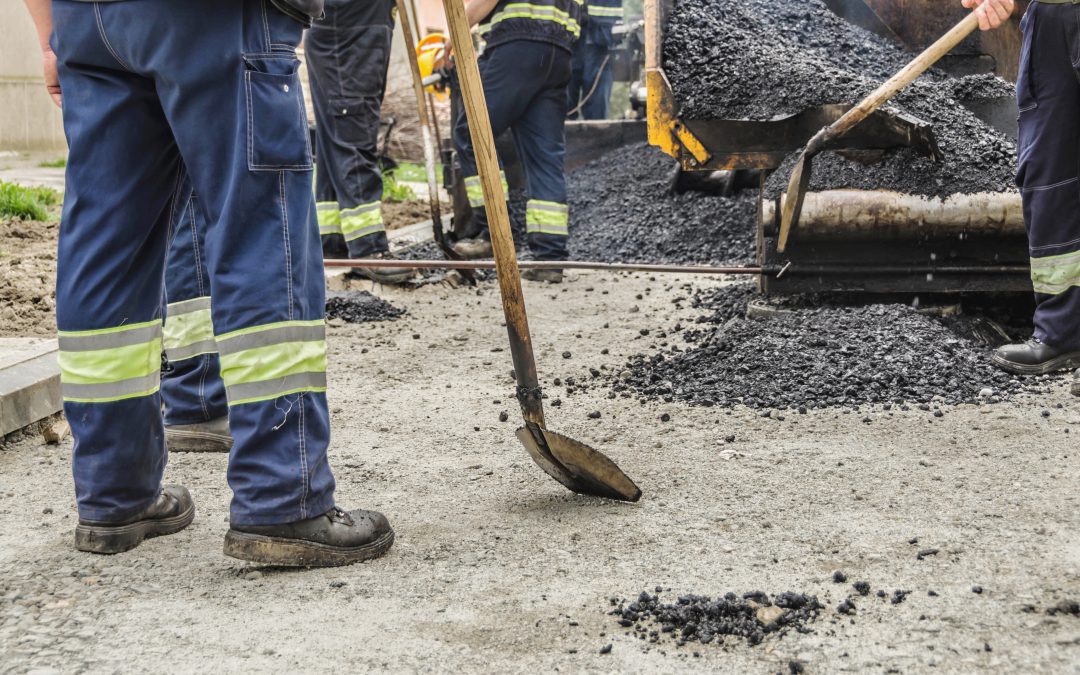
by lakeridge | Jun 21, 2018 | Commercial Paving, Residential Paving
When you’re driving down the highway, you don’t often think about the smooth, durable black stuff underneath your tires. It turns out, there’s a lot more to asphalt pavement than meets the eye. For instance, it’s one of the most widely-used materials in the country – more than 94 percent of American roads are paved with asphalt – and there are many types that cater to different situations.1 If you plan to take on a pavement project such as resurfacing a driveway, review these different types of asphalt so you can be sure you’re getting the best product for the road ahead. Porous Asphalt Porous asphalt is often used to pave parking lots because it reduces standing water after a heavy rainstorm. This style of asphalt is ideal for rainy spots, like the Puget Sound area. When storm water pools on an asphalt surface, it can cause defects, such as potholes, which are dangerous for vehicles and pedestrians. Porous asphalt combats pot holes and other defects by giving standing water a place to go. A layer of permeable asphalt is placed over a reservoir of open-graded stone. Storm water travels through the pavement, into the stone bed and eventually infiltrates the soil. When properly maintained, porous asphalt can last 20 years or more.2 Quiet Pavement Just as its name suggests, quiet pavement is a type of asphalt that reduces traffic noise. Paving a noisy road with a stone-matrix asphalt or open-grade friction has shown to reduce noise levels by up to seven decibels. According to the Asphalt Pavement Alliance, reducing noise levels by even just three decibels is equivalent...
by lakeridge | May 31, 2018 | Commercial Paving, Residential Paving
Download the full presentation...
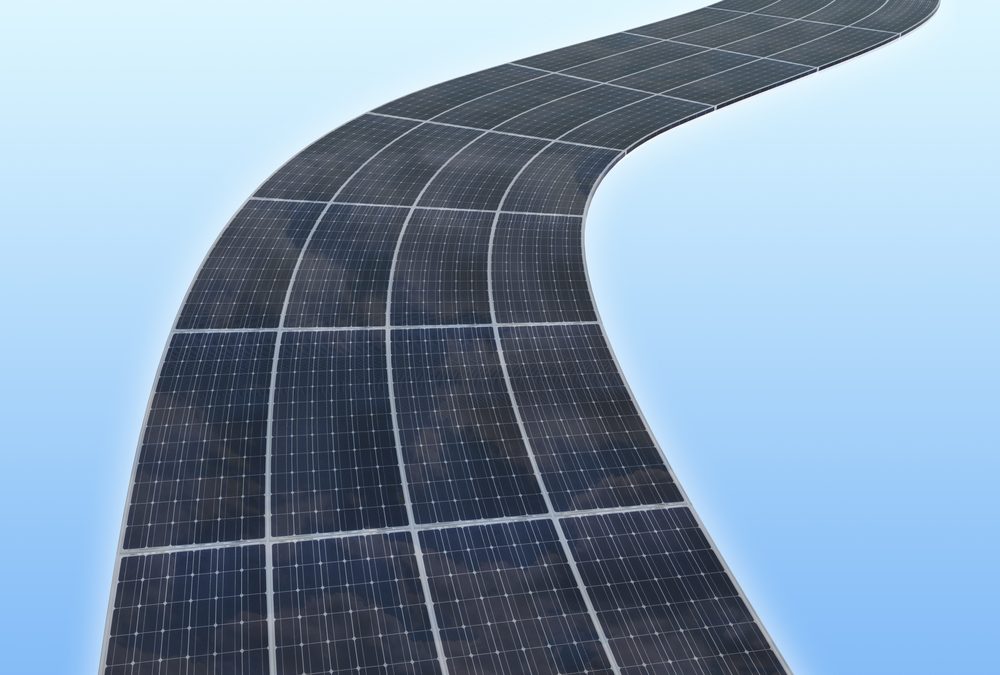
by lakeridge | May 31, 2018 | Commercial Paving
The asphalt industry has made leaps and bounds in terms of ecological impact. Companies like Lakeridge Paving Co. contribute to the improved sustainability of asphalt by using recycled materials as much as possible. From an economical and functionality standpoint, asphalt is still the best option for paving roads, and will be for the foreseeable future. It’s incumbent upon companies like ours to do our best to minimize the environmental impact of asphalt, and we strive to do so every day. But in the distant future, there may be options that are more sustainable and functional than asphalt – even if that day is far off. As technology continues to improve and international interest in “green” advancement grows, solar panel roads may become a realistic possibility that could provide a more sustainable alternative to asphalt. The cost – and the sheer volume of roads – means solar roads are not an economical or entirely realistic solution today, but it’s interesting nonetheless. A Second Look at Solar Roadways® You have probably heard about Solar Roadways before, even if you don’t recognize the company name. In 2010, the husband-wife team Scott and Julie Brusaw received their first of three grants from the U.S. Department of Transportation, and news outlets started reporting on their unique story. Then in 2014, they launched a highly successful Indiegogo crowdfunding campaign, raising more than 2.2 million dollars.1 Their press coverage has dwindled since then, but they’ve continued their work on solar panels in the meantime. So, what have the Brusaws been up to? As it turns out, they’ve installed a solar panel prototype in their hometown...
by lakeridge | Apr 20, 2018 | Commercial Paving
Download the full presentation...
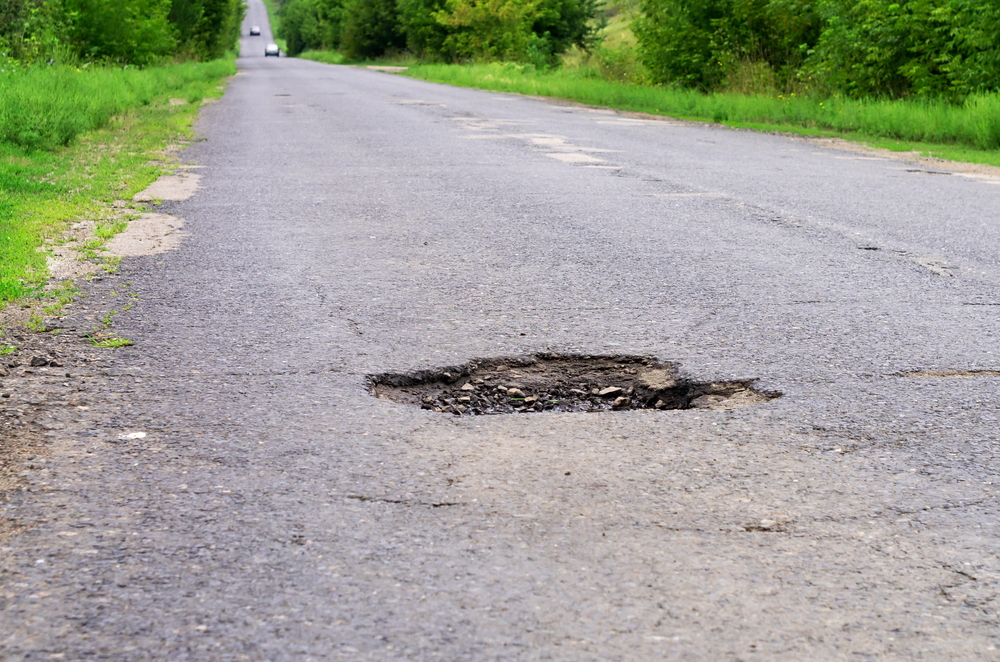
by lakeridge | Apr 20, 2018 | Commercial Paving
As temperatures climb, you may start to notice an increase in tire blowouts and accidents around town. This is because spring is the season of pothole formation. Potholes are not only a major inconvenience, but also a serious safety problem. Why Potholes Are Worse in Spring March and April have two characteristics that fuel the formation of potholes – plenty of rain and fluctuating temperatures. Of course, Washington is rainy year-round, so the real problem for us in spring is the constant dance above and below the freezing point. On any given day, the water in the ground may freeze or thaw, which greatly affects the composition of our roads. How Potholes Form Potholes are caused by the degradation of both the asphalt and the roadbed that lies just beneath. Over time, a large amount of traffic and water will cause them to break down and collapse, creating a pothole. Formation of cracks – Most often, cracks are formed due to regular traffic. As cars and trucks roll over the pavement, the asphalt is put under alternating states of high stress and no stress. This will eventually create small cracks in the road. In hot climates, the cracks worsen with high temperatures, and in cold climates, cracks are widened when water gets inside, freezes and expands. Water seepage – Cracks in the road give rainwater a pathway to seep into the asphalt and the roadbed layer underneath. Traffic makes this problem worse, as the weight from vehicles forces water downward into the road. Pooled water softens the roadbed and weakens the pavement it supports. Freezing – In the...








